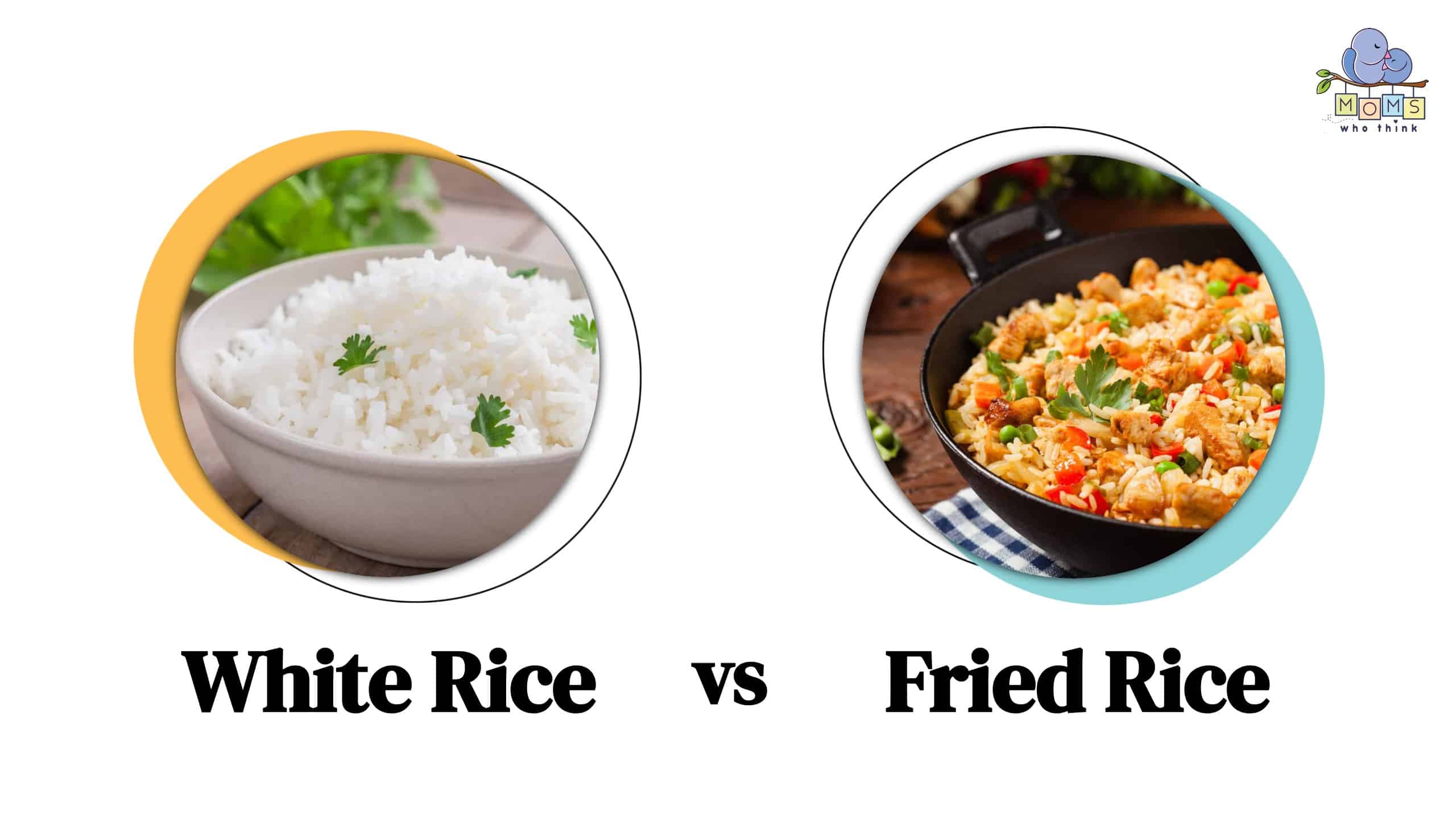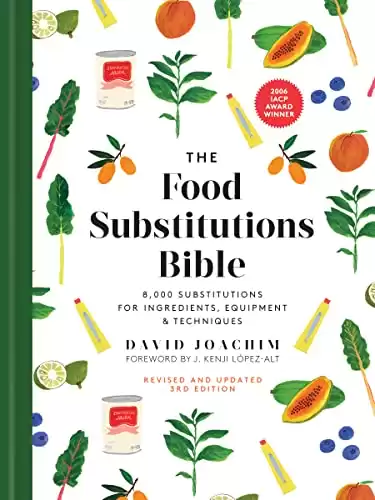Deciphering the Delectable Dilemma – White Rice vs. Fried Rice: Which Will Fulfill Your Cravings?
Rice is frequently regarded as a healthier option for numerous side dishes, making it an increasingly common complement to various dishes. There are two types of rice meals: fried rice and boiled rice. Although both can be tasty and filling, there are some significant distinctions between fried rice and steamed white rice, in addition to their nutritional implications.
Even though both types share the same ingredient base, they are utilized in different cuisines and have different textures and flavor profiles.
Keep reading to learn more about their differences!
- The must-have convenient reference guide for every home cook!
- Includes more than 8,000 substitutions for ingredients, cookware, and techniques.
- Save time and money on by avoiding trips to grab that "missing" ingredient you don't really need.
White Rice vs. Fried Rice: Key Differences
Because of its neutral flavor, white rice is an exceedingly flexible cuisine that may be served with a wide range of foods. It's stuffed, nutritious, and surprisingly simple to mix with other ingredients to make an excellent dish. Knowing the distinctions between these two rice recipes allows us to value their unique culinary histories.
There are several distinctions between the two:
Nutrients
In cooking techniques like frying, a significant amount of the nutrients in the food are lost. With boiling or steaming, this isn't the case because all of the nutrients remain intact. Rice that has been steamed or boiled instead of fried often contains fewer calories, fat, and salt.
Steaming rice is considered one of the healthiest methods to prepare it since it reduces the removal of nutrients that are water-soluble from the water used for cooking and doesn't call for any additional oil.
Thus, steamed white rice has fewer calories than fried rice. White rice cooks in water with no added oil or other seasonings, while fried rice contains ingredients such as oil, meat, and seasonings that make its calorie level much higher.
Taste
Fried rice and boiled rice have different flavors and textures. Fried rice is more savory than steamed rice since it has been cooked in oil along with additional seasonings, whereas steamed rice is softer and has a milder taste.
Purposes
Whether it is long-grain, round-grain, or medium-grain, white rice is just white rice that has been steamed or boiled. Given its mild flavor, people often pair it with more flavorful dishes or viands. White rice serves its main purpose as a side dish and should be simple to prepare. You can also turn this into desserts such as rice pudding, mango sticky rice, tamales, and many more. On the other hand, fried rice is frequently eaten on its own or as an addition to another meal.
Ingredients
To make boiled rice, all you need is water. In certain circumstances, some people add salt for more flavor, but there are no oil or spices used. Fried rice, on the other hand, contains oil, salt, and a variety of spices. As a result, they are more flavorful compared to just steamed rice.
Cooking Process
White rice is often just pure rice that has been cooked with liquid without any other high-calorie ingredients. But you can also fry, boil, steam, and bake white rice, depending on the dish you are going for.
Contrarily, fried rice, as the name suggests, is only done by frying. Cooked, cooled rice is typically used to make fried rice with any type of white rice. This helps people make use of leftover rice and turn it into something flavorful.
White Rice vs. Fried Rice: Nutritional Value
White rice and fried rice have different nutritional values. Let's compare them.
White rice, also known as polished rice, is the most commonly consumed type. It goes through a refining process that removes the bran and germ, which leads to a loss of essential nutrients and fiber. As a result, white rice mainly provides carbohydrates for quick energy but lacks other important nutrients. It is low in fat and protein and contains minimal vitamins and minerals.
Fried rice, on the other hand, is made by stir-frying cooked rice with various ingredients like vegetables, meat, eggs, and sauces. The nutritional value of fried rice can vary depending on the ingredients and cooking methods used. If prepared with nutrient-rich vegetables, lean proteins, and minimal added fats, fried rice can offer a more balanced nutritional profile compared to plain white rice.
However, it's important to note that traditional fried rice recipes often include higher amounts of added oils, sauces, and seasonings, which can significantly increase calorie and fat content. Frying rice can also reduce its fiber content. Consuming excessive amounts of fried rice made with unhealthy fats can contribute to higher saturated fat and sodium intake.
- The must-have convenient reference guide for every home cook!
- Includes more than 8,000 substitutions for ingredients, cookware, and techniques.
- Save time and money on by avoiding trips to grab that "missing" ingredient you don't really need.
To make fried rice a healthier choice, consider using brown rice instead of white rice. Brown rice retains the bran and germ, providing more fiber, vitamins, and minerals. It has a higher nutrient content and can contribute to better overall nutrition when used as the base for fried rice.
In conclusion, white rice is mainly a source of carbohydrates but lacks significant nutrients. Fried rice, depending on how it's prepared, can offer a more diverse nutritional profile, especially when made with wholesome ingredients and healthier cooking methods. Using brown rice as the base for fried rice can further enhance its nutritional value.
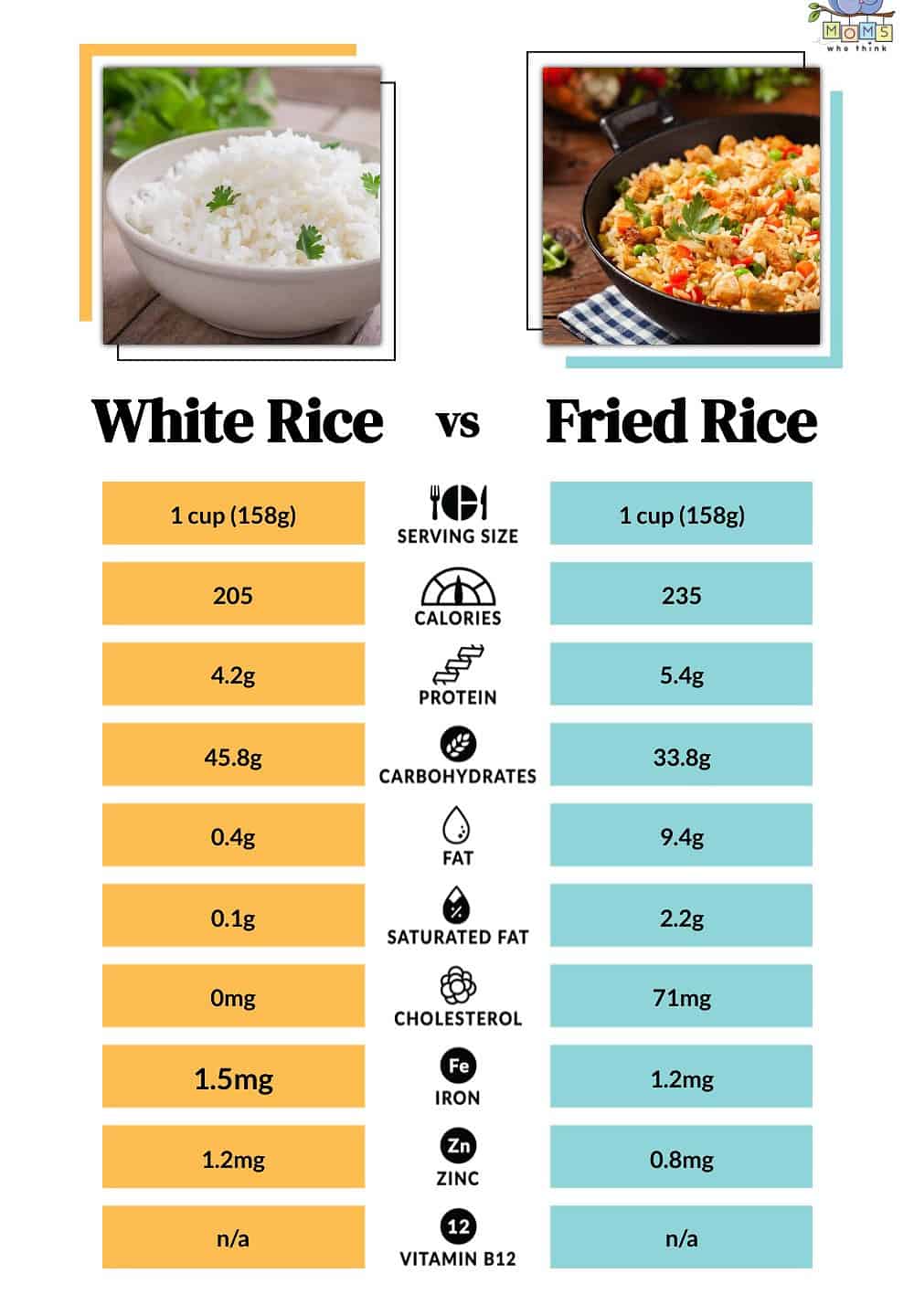
©
What is White Rice?
White rice is an integral dish across the world because of its variety and affordability. Cooking white rice is relatively easy and only takes thirty minutes or less.
White rice is a refined carbohydrate because of its small amount of dietary fiber. This undergoes a polishing process, giving it its gleaming white look. White rice loses numerous nutrients during the milling stage; however, it is typically fortified with the exact same vitamins throughout the manufacturing process to restore its depleted vitamins and minerals. According to Cermak & van Loon, white rice is a good source of carbohydrate energy for athletes. Additionally, due to its high-carb, low-fiber profile, many people choose refined rice instead of brown.
What is Fried Rice?
As the name implies, fried rice is simply rice that has been fried. In contrast to steamed rice, fried rice serves its purpose as the main course, particularly if it contains many ingredients. Fried rice is often made with rice, soy sauce, meat, vegetables, and a shredded egg. It is quite filling and could easily serve as a meal on its own! Long-grain rice is often the best grain to use for this, although short-grain or basmati rice can also be used.
When making fried rice, there are no rules. It's an open-ended method of preparing rice. But always remember that you should only eat fried rice in moderation as a part of a diverse and well-rounded diet because it is not considered a nutritionally complete meal on its own.
Best Food Match for Fried Rice
Fried rice is exceptionally versatile and complements a wide range of meals, including soup, steak, fish, and many more. However, if you're looking for ideas on what to pair it with, here are some of my favorites.
Turmeric Chicken
Turmeric chicken is a nutritious meal made using onion, milk, ground turmeric, fish sauce, chicken, coconut oil, yellow curry noodles, and other additives. It's easy to prepare, inexpensive, and versatile, making it an excellent complement to any dinner.
Chicken Teriyaki
If you happen to be someone who loves meat, a serving of chicken with your egg fried rice is usually a smart choice. Teriyaki chicken is a famous meal that has been floating around for quite some time. Considering its sweet and salty flavors, this dish is juicy and combines perfectly with fried rice.
Pork ribs with BBQ sauce
Pork ribs are one of the best side dishes to offer with fried rice if you're someone who loves pork. You can always prepare pork and rice in endless ways, and they are always wonderful together. A one-pan barbecued pork and rice skillet meal is flavorful and filling, which will keep people coming back for more.
Spring Rolls
Spring rolls are a perennial favorite among finger meals, snacks, and appetizers. They are lighter than a regular egg roll and go well with fried rice.
Best Food Match for White Rice
White rice is the ideal side dish for almost any food, whether you're searching for a hearty side to go with a main dish or want something light and nutritious to finish your dinner.
So here are the best foods you can pair with white rice:
Chicken Adobo
This is a cherished national cuisine that harmoniously matches the nation's affection for rice. Chicken Adobo is a traditional Filipino meal and one of the most well-known Filipino dishes. This is a traditional Filipino meal that is as flavorful as it is astringent, and it pairs well with a huge plate of rice.
Bulgogi
Bulgogi is Korea's most widely recognized barbecue cuisine, consisting of thinly sliced beef soaked in a soy sauce marinade and then grilled to ultimate perfection. It is both spicy and sweet and goes nicely with white rice. It's even more delicious once the rice soaks up the somewhat sweet and salty sauce from the bulgogi.
- The must-have convenient reference guide for every home cook!
- Includes more than 8,000 substitutions for ingredients, cookware, and techniques.
- Save time and money on by avoiding trips to grab that "missing" ingredient you don't really need.
Creamy Garlic Herb chicken
This chicken has a deliciously creamy white garlic sauce that is wonderfully served over white rice. It takes just 20 minutes to prepare this from start to finish. You'll surely adore the flavorful, creamy garlic white sauce if you love cream-based sauces.
Japanese Curry
Japanese curry often consists of protein-rich ingredients such as sweet onions, carrots, and potatoes and exhibits a thick, stew-like texture. Instead of being tangy, Japanese curry is typically sweet and served with a rich, decadent, and umami brown sauce.
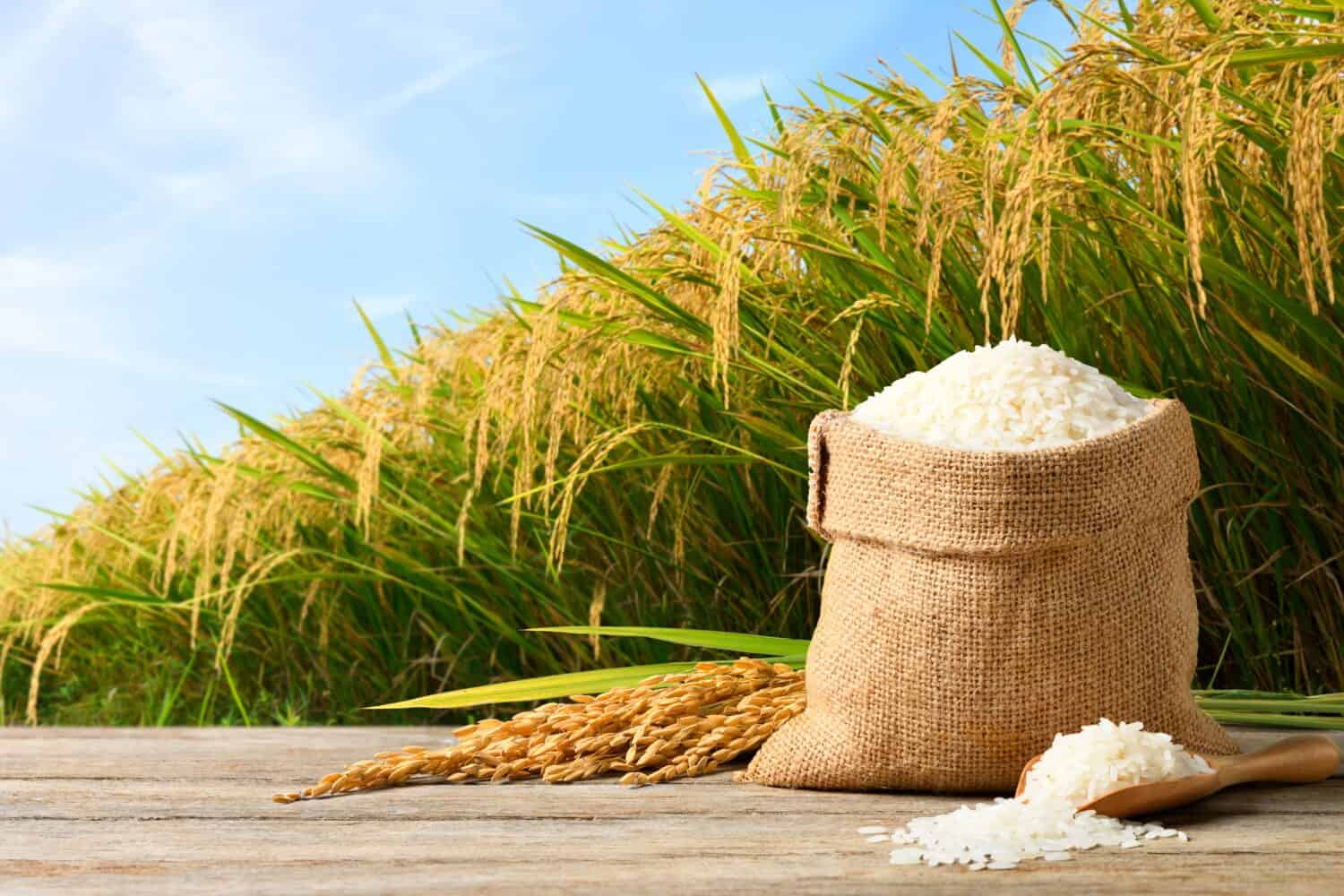
©Photoongraphy/Shutterstock.com
Which Rice is Best for Fried Rice?
The most suitable rice for fried rice is jasmine rice or a comparable quality long-grain white rice; basmati and plain long-grain rice are also good choices. Prior to frying, you must steam the rice first and give it time to dry out and cool down.
Which is Easier to Make?
White rice is simpler to prepare. All you have to do is cook it on the stove or in the rice cooker and wait for it to cook on its own. Fried rice, on the other hand, also uses steamed white rice before frying, so if you don't have chilled cooked or day-old rice available in the freezer, the extra steaming process makes it more time-consuming.
Conclusion
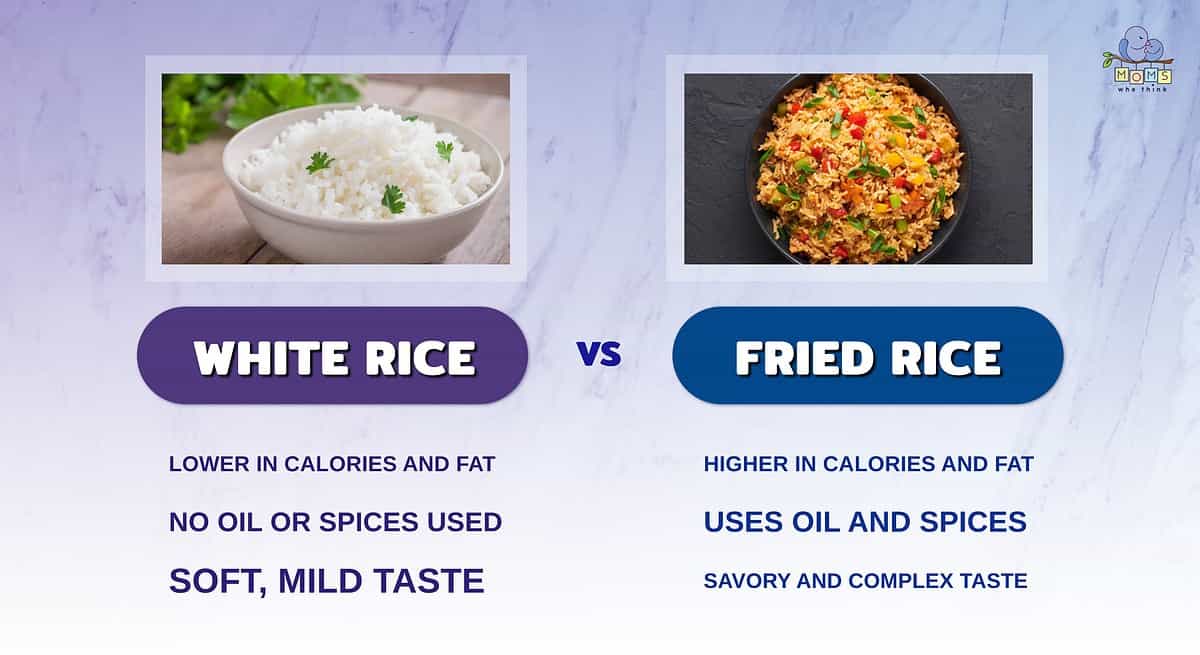
- White rice is lower in calories and fat than fried rice, due to its simpler cooking method.
- No oil or spices are involved in the cooking of white rice, although some salt may be added for taste. Fried rice uses oil and spices as a central component of its cooking process, giving it a boost in flavor.
- Speaking of flavor, fried rice has a savory and complex taste. White rice has a soft, mild taste that may be mildly salty if salt is added to its preparation. White rice is often paired with a sauce or gravy to give it additional flavor.
Consequently, one of the main distinctions between white rice and fried rice is how they are prepared, their cooking methods, purposes, nutrients, and flavors.
Fried rice is preferable if you like something with a bit more spice and is enjoyable as a solo meal, while white rice is preferable if you're searching for a food item to go with a flavorful dish and want something with a more basic taste to completely complement the meal. Steamed white rice also has fewer calories, cholesterol, and salt than fried rice, so this is more suitable for those who are trying to lose weight.
Whether you prefer the simple nature of fluffy white rice or the intense textures and flavors of fried rice, the choice is yours. Keep in mind that when given the option between ordinary and spectacular, let your taste sensations lead you to a world of fried rice delights!
Check out this quick and easy chicken fried rice:
PrintChicken Fried Rice
- Yield: 4 servings 1x
Ingredients
2 egg whites
1 egg
1/2 teaspoon salt, divided
1 small onion, chopped
1 garlic clove, minced
1 cup frozen mixed vegetables
2 cups diced cooked chicken breast (rotisserie chicken works well)
3 Tablespoons reduced sodium soy sauce
3 cups cold cooked brown rice for the fried rice
Instructions
1. In a small bowl, combine the egg whites, egg, and ¼ teaspoon salt. In a large nonstick skillet or wok coated with cooking spray, cook the egg mixture over medium heat. As eggs set, lift edges, letting uncooked portion flow underneath. When the eggs are set, remove, and cut into 1 inch pieces; keep warm.
2. In the same pan, stir fry the onion and garlic until tender.
3. Add vegetables; cover and cook over medium high heat for 3 to 4 minutes or until no longer frozen.
4. Stir in the chicken, soy sauce, and remaining ¼ teaspoon salt; cook for 1 minute.
5. Add rice; stir fry for 4 to 5 minutes or until heated through. Add eggs; heat through.
Nutrition
- Serving Size: 1¼ cups
- Calories: 325
- Sodium: 854mg
- Fat: 4g
- Saturated Fat: 1g
- Carbohydrates: 41g
- Fiber: 2g
- Protein: 29g
- Cholesterol: 107mg
